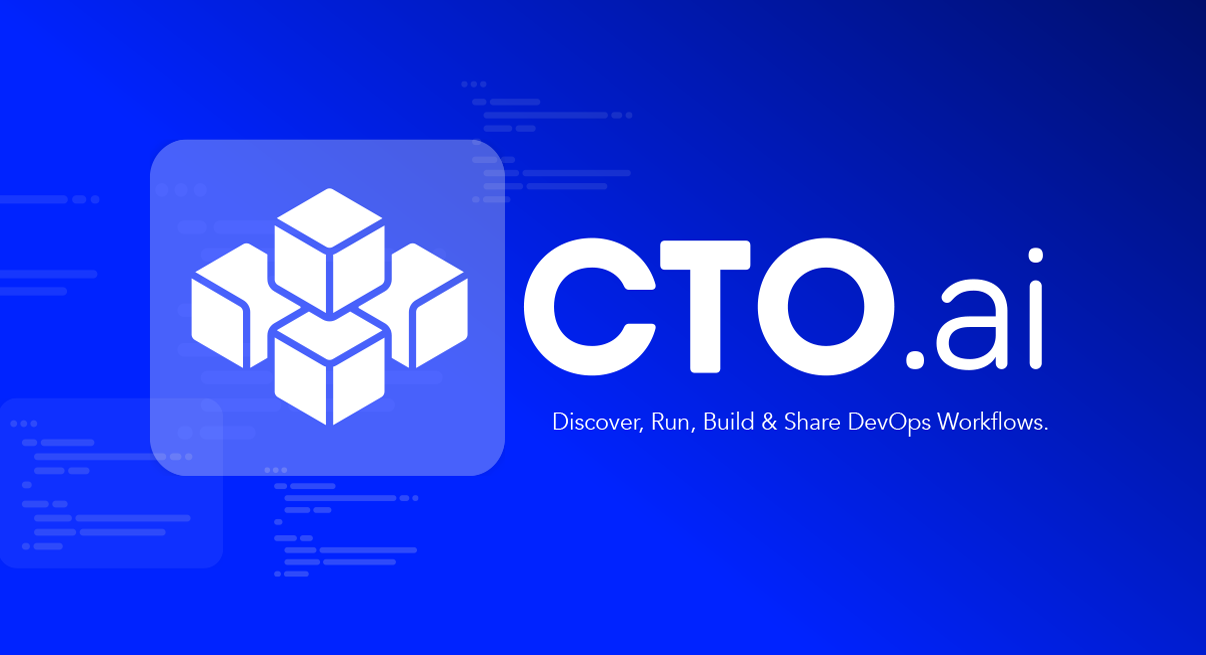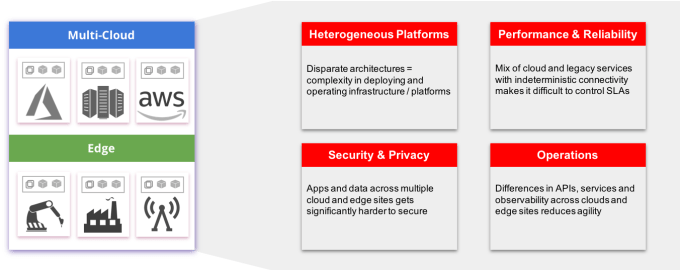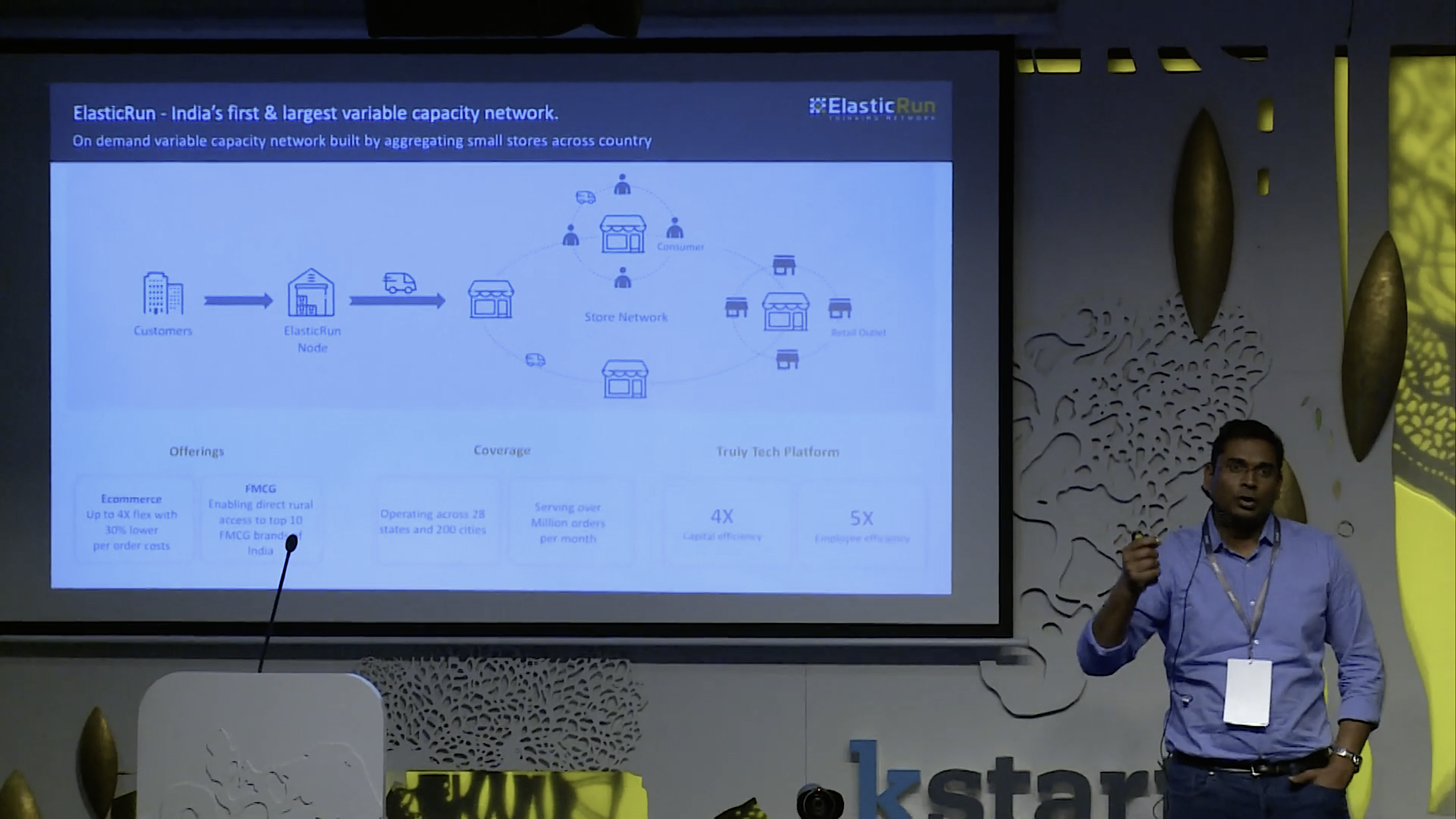funding
Auto Added by WPeMatico
Auto Added by WPeMatico
Gradeup, an edtech startup in India that operates an exam preparation platform for undergraduate and postgraduate-level courses, has raised $7 million from Times Internet as it looks to expand its business in the country.
Times Internet, a conglomerate in India, invested $7 million in Series A and $3 million in seed financing rounds of the four-year-old Noida-based startup, it said. Times Internet is the only external investor in Gradeup, they said.
Gradeup started as a community for students to discuss their upcoming exams, and help one another with solving questions, said Shobhit Bhatnagar, co-founder and CEO of Gradeup, in an interview with TechCrunch.
While those functionalities continue to be available on the platform, Gradeup has expanded in the last year to offer online courses from teachers to help students prepare for exams, he said. These courses, depending on their complexity and duration, cost anywhere between Rs 5,000 ($70) and Rs 35,000 ($500).

“These are live lectures that are designed to replicate the offline experience,” he said. The startup offers dozens of courses and runs multiple sessions in English and Hindi languages. As many as 200 students tune into a class simultaneously, he said.
Students can interact with the teacher through a chatroom. Each class also has a “student success rate” team assigned to it that follows up with each student to check if they had any difficulties in learning any concept and take their feedback. These extra efforts have helped Gradeup see more than 50% of its students finish their courses — an industry best, Bhatnagar said.
Each year in India, more than 30 million students appear for competitive exams. A significant number of these students enroll themselves to tuitions and other offline coaching centers.
“India has over 200 million students that spend over $90 billion on different educational services. These have primarily been served offline, where the challenge is maintaining high quality while expanding access,” said Satyan Gajwani, vice chairman of Times Internet.
In recent years, a number of ed tech startups have emerged in the country to cater to larger audiences and make access to courses cheaper. Byju’s, backed by Naspers and valued at more than $5.5 billion, offers a wide range of self-learning courses. Vedantu, a Bangalore-based startup that raised $42 million in late August, offers a mix of recorded and live and interactive courses.

Co-founders of Noida-based ed tech startup Gradeup
But still, only a fraction of students take online courses today. One of the roadblocks in their growth has been access to mobile data, which until recent years was fairly expensive in the country. But arrival of Reliance Jio has solved that issue, said Bhatnagar. The other is acceptance from students and, more importantly, their parents. Watching a course online on a smartphone or desktop is still a new concept for many parents in the country, he said. But this, too, is beginning to change.
“The first wave of online solutions were built around on-demand video content, either free or paid. Today, the next wave is online live courses like Gradeup, with teacher-student interactivity, personalisation and adaptive learning strategies, delivering high-quality solutions that scale, which is particularly valuable in semi-urban and rural markets,” said Times Internet’s Gajwani.
“These match or better the experience quality of offline education, while being more cost-effective. This trend will keep growing in India, where online live education will grow very quickly for test prep, reskilling and professional learning,” he added.
Gradeup has amassed more than 15 million registered students who have enrolled to live lectures. The startup plans to use the fresh capital to expand its academic team to 100 faculty members (from 50 currently) and 200 subject matters and reach more users in smaller cities and towns in India.
“Students even in smaller cities and towns are paying a hefty amount of fee and are unable to get access to high-quality teachers,” Bhatnagar said. “This is exactly the void we can fill.”
Powered by WPeMatico
There’s too much hype about mythical “10X developers.” Everyone’s desperate to hire these “ninja rockstars.” In reality, it’s smarter to find ways of deleting annoying chores for the coders you already have. That’s where CTO.ai comes in.
Emerging from stealth today, CTO.ai lets developers build and borrow DevOps shortcuts. These automate long series of steps they usually have to do manually, thanks to integrations with GitHub, AWS, Slack and more. CTO.ai claims it can turn a days-long process like setting up a Kubernetes cluster into a 15-minute task even sales people can handle. The startup offers both a platform for engineering and sharing shortcuts, and a service where it can custom build shortcuts for big customers.

What’s remarkable about CTO.ai is that amidst a frothy funding environment, the 60-person team quietly bootstrapped its way to profitability over the past two years. Why take funding when revenue was up 400% in 18 months? But after a chance meeting aboard a plane connected its high school dropout founder Kyle Campbell with Slack CEO Stewart Butterfield, CTO.ai just raised a $7.5 million seed round led by Slack Fund and Tiger Global.
“Building tools that streamline software development is really expensive for companies, especially when they need their developers focused on building features and shipping to customers,” Campbell tells me. The same way startups don’t build their own cloud infrastructure and just use AWS, or don’t build their own telecom APIs and just use Twilio, he wants CTO.ai to be the “easy button” for developer tools.

“I’ve been a software engineer since the age of 8,” Campbell recalls. In skate-punk attire with a snapback hat, the young man meeting me in a San Francisco Mission District cafe almost looked too chill to be a prolific coder. But that’s kind of the point. His startup makes being a developer more accessible.
After spending his 20s in software engineering groups in the Bay, Campbell started his own company, Retsly, that bridged developers to real estate listings. In 2014, it was acquired by property tech giant Zillow, where he worked for a few years.

That’s when he discovered the difficulty of building dev tools inside companies with other priorities. “It’s the equivalent of a snake swallowing an elephant,” he jokes. Yet given these tools determine how much time expensive engineers waste on tasks below their skill level, their absence can drag down big enterprises or keep startups from rising.
CTO.ai shrinks the elephant. For example, the busywork of creating a Kubernetes cluster such as having to the create EC2 instances, provision on those instances and then provision a master node gets slimmed down to just running a shortcut. Campbell writes that “tedious tasks like running reports can be reduced from 1,000 steps down to 10,” through standardization of workflows that turn confusing code essays into simple fill-in-the-blank and multiple-choice questions.

The CTO.ai platform offers a wide range of pre-made shortcuts that clients can piggyback on, or they can make and publish their own through a flexible JavaScript environment for the rest of their team or the whole community to use. Companies that need extra help can pay for its DevOps-as-a-Service and reliability offerings to get shortcuts made to solve their biggest problems while keeping everything running smoothly.
Campbell envisions a new way to create a 10X engineer that doesn’t depend on widely mocked advice on how to spot and capture them like trophy animals. Instead, he believes one developer can make five others 2X more efficient by building them shortcuts. And it doesn’t require indulging bad workplace or collaboration habits.
With the new funding that also comes from Yaletown Partners, Pallasite Ventures, Panache Ventures and Jonathan Bixby, CTO.ai wants to build deeper integrations with Slack so developers can run more commands right from the messaging app. The less coding required for use, the broader the set of employees that can use the startup’s tools. CTO.ai may also build a self-service tier to augment its seats, plus a complexity model for enterprise pricing.

Now it’s time to ramp up community outreach to drive adoption. CTO.ai recently released a podcast that saw 15,000 downloads in its first three weeks, and it’s planning some conference appearances. It also sees virality through its shortcut author pages, which, like GitHub profiles, let developers show off their contributions and find their next gig.
One risk is that GitHub or another core developer infrastructure provider could try to barge directly into CTO.ai’s business. Google already has Cloud Composer, while GitHub launched Actions last year. Campbell says its defense comes through neutrally integrating with everyone, thereby turning potential competitors into partners.
The funding firepower could help CTO.ai build a lead. With every company embracing software, employers battling to keep developers happy and teams looking to get more of their staff working with code, the startup sits at the intersection of some lucrative trends of technological empowerment.
“I have a three-year-old at home and I think about what it will be like when he comes into creating things online,” Campbell concludes. “We want to create an amazing future for software developers, introducing automation so they can focus on what makes them such an important aspect. Devs are defining society!”
[Image Credit: Disney/Pixar via WallHere Goodfon]
Powered by WPeMatico
Volterra is an early-stage startup that has been quietly working on a comprehensive solution to help companies manage applications in hybrid environments. The company emerged from stealth today with a $50 million investment and a set of products.
Investors include Khosla Ventures and Mayfield, along with strategic investors M12 (Microsoft’s venture arm), Itochu Technology Ventures and Samsung NEXT. The company, which was founded in 2017, already has 100 employees and more than 30 customers.
What attracted these investors and customers is a full-stack solution that includes both hardware and software to manage applications in the cloud or on-prem. Volterra founder and CEO Ankur Singla says when he was at his previous company, Contrail Systems, which was acquired by Juniper Networks in 2012 for $176 million, he saw first-hand how large companies were struggling with the transition to hybrid.
“The big problem we saw was in building and operating applications that scale is a really hard problem. They were adopting multiple hybrid cloud strategies, and none of them solved the problem of unifying the application and the infrastructure layer, so that the application developers and DevOps teams don’t have to worry about that,” Singla explained.
He says the Volterra solution includes three main products — VoltStack, VoltMesh and VoltConsole — to help solve this scaling and management problem. As Volterra describes the total solution, “Volterra has innovated a consistent, cloud-native environment that can be deployed across multiple public clouds and edge sites — a distributed cloud platform. Within this SaaS-based offering, Volterra integrates a broad range of services that have normally been siloed across many point products and network or cloud providers.” This includes not only the single management plane, but security, management and operations components.

Diagram: Volterra
The money has come over a couple of rounds, helping to build the solution to this point, and it required a complex combination of hardware and software to do it. They are hoping organizations that have been looking for a cloud-native approach to large-scale applications, such as industrial automation, will adopt this approach.
Powered by WPeMatico
Robotic Process Automation (RPA) has been a hot commodity in recent years as it helps automate tedious manual workflows inside large organizations. Robocorp, a San Francisco startup, wants to bring open source and RPA together. Today it announced a $5.6 million seed investment.
Benchmark led the round, with participation from Slow Ventures, firstminute Capital, Bret Taylor (president and chief product officer at Salesforce) and Docker CEO Rob Bearden. In addition, Benchmark’s Peter Fenton will be joining the company’s board.
Robocorp co-founder and CEO Antti Karjalainen has been around open-source projects for years, and he saw an enterprise software category that was lacking in open-source options. “We actually have a unique angle on RPA, where we are introducing open source and cloud native technology into the market and focusing on developer-led technologies,” Karjalainen said.
He sees a market that’s top-down and focused on heavy sales cycles. He wants to bring the focus back to the developers who will be using the tools. “We are all about removing friction from developers. So, we are focused on giving developers tools that they like to use, and want to use for RPA, and doing it in an open-source model where the tools themselves are free to use,” he said.
The company is built on the open-source Robot Framework project, which was originally developed as an open-source software testing environment, but he sees RPA having a lot in common with testing, and his team has been able to take the project and apply it to RPA.
If you’re wondering how the company will make money, they are offering a cloud service to reduce the complexity even further of using the open-source tools, and that includes the kinds of features enterprises tend to demand from these projects, like security, identity and access management, and so forth.
Benchmark’s Peter Fenton, who has invested in several successful open-source startups, including JBoss, SpringSource and Elastic, sees RPA as an area that’s ripe for a developer-focused open-source option. “We’re living in the era of the developer, where cloud-native and open source provide the freedom to innovate without constraint. Robocorp’s RPA approach provides developers the cloud native, open-source tools to bring RPA into their organizations without the burdensome constraints of existing offerings,” Fenton said.
The company intends to use the money to add new employees and continue scaling the cloud product, while working to build the underlying open-source community.
While UIPath, a fast-growing startup with a hefty $7.1 billion valuation recently announced it was laying off 400 people, Gartner published a study in June showing that RPA is the fastest growing enterprise software category.
Powered by WPeMatico
If you work for someone else, you likely know the drill: in comes that annual email reminding you that it’s time for unconscious bias or sexual harassment training, and if you could please finish up this mandatory module by this date, that would be terrific.
The email — not to mention the programming itself — is straight out of “Office Space.” Little surprise that when Anne Solmssen, a Harvard-trained computer scientist, happened to call a friend recently who was clicking through his own company-sponsored training program, his answer to how it was going was, “It’s more interesting when I have baseball on.”
Solmssen has some other ideas about how to make sexual harassment training far more interesting and less “cringe-worthy.” Indeed, she recently joined forces with Roxanne Petraeus, another Harvard grad, to create Ethena, a software-as-a-service startup that’s promising customizable training delivered in bite-size segments that caters to individuals based on how much they already know about sexual harassment in the workplace. The software will also be sector-specific when it’s released more widely in the first quarter of next year.
The company first came together this past summer led by Petraeus, who joined the U.S. Reserve Officers’ Training Corps to help defray the cost of her Ivy League education and wound up spending seven years in the U.S. Army, including as a civil affairs officer, before co-founding an online meals marketplace, then spending a year with McKinsey & Co. to get a better handle on how businesses are run.
Petraeus says that across her experience, and particularly in the Army, she had “great leaders” who were “thoughtful about their [reports’] development goals and what was happening in their personal lives, and brought out the best in their people, rather than making them feel less than or marginalized.”
Still, she was aware that from an institutional standpoint, most harassment training is not thoughtful, that it’s a matter of checking boxes on an annual basis to ensure compliance with different state laws, depending on where an organization is headquartered. She marveled that so much of the content employees are consuming seems “designed for a 1980s law firm.”
Solmssen was meanwhile working for a venture-backed public safety software company, Mark43. She was getting along just fine, too, but when a friend put the two in touch on the hunch that their engineering talent and vision could amount to something, that instinct proved right.
“I’d been working for Mark43 for four years, and I wasn’t particularly interested in starting a business,” Solmssen says. “But I fell in love with Roxanne and this idea, and I came to this thinking that someone needs to make [this training process] better. We’re still using the tools and technologies that we’ve had since 1997.”
So how is what they’re building different than what’s currently available? In lots of ways, seemingly. For starters, Ethena doesn’t want employees to “knock it out all at once” in an hour or two of training at the end of each year. Instead, it’s creating what it calls monthly “nudges” that deliver relevant studies and questions on a monthly basis — information that can then be used in an all-hands meeting, for example, helping to reinforce its goals.
It’s also focused on sending content and questions to people that’s iterative and that evolves based on how an individual responds. A new hire might answer very differently than a sponsor of other women within an organization, for example. It’s a stark contrast to to the black-and-white scenarios that every employee is typically presented. (Think: “Judy and Brian go to a bar after work.”)
These subtleties are a significant development, argues Petraeus, because “traditional training implicitly tells employees that going to spending time together outside of work is bad for mentorship. It’s why you hear things like, ‘I just hired my first female analyst; can I get into an Uber with her when we’re traveling?’ ” Turning every mixed-gender occasion into a potential minefield is “not the message we should be conveying.”
Yet it’s a message that’s being absorbed. According to a survey conducted earlier this year by LeanIn.Org and SurveyMonkey, 60% of managers who are men are now uncomfortable participating in a common work activity with a woman, such as mentoring, working alone or socializing together. That’s a 32% jump from a year ago. According to that same survey, senior-level men are now 12 times more hesitant to have one-on-one meetings with junior women, nine times more hesitant to travel together and six times more hesitant to have work dinners together.
Even the U.S. Equal Employment Opportunity Commission thinks sexual harassment training has gone wrong somewhere, noting that it hasn’t worked as a prevention tool in part because it’s been too focused on simply avoiding legal liability. Indeed, a few years ago, a task force studying harassment in the workplace on behalf of the EEOC concluded that “effective training cannot occur in a vacuum – it must be part of a holistic culture of non-harassment that starts at the top.” Similarly, it added, “one size does not fit all: training is most effective when tailored to the specific workforce and workplace and different cohorts of employees.”
Toward that end, and with compliance in mind, Ethena is also modernizing the content it delivers, including as it pertains to dating at work, which definitely happens; and inclusivity around pregnant colleagues, who are often subtly marginalized; and transgender colleagues, who can also find themselves feeling either misunderstood or overlooked by current sexual harassment training materials.
There’s also a heavy focus on analytics. If 60% of employees don’t know about a company’s policies around office dating, for example, or employees in an outfit’s marketing department appear to know less about an organization’s values than other departments, it will flag these things so managers can take preventative action. (“Say there’s a new manager in the LA office where employees seem to be answering less consistently,” suggests Solmssen. “We can provide additional training to get that person up to speed.”)
For Petraeus — who is the daughter-in-law of retired general and former CIA director David Petraeus — the overarching goal is to kill off mandatory yearly training where the takeaway for many employees, the fundamental standard, is, “Can I go to jail for this comment?”
It’s too soon to say if Ethena will be successful. It’s only halfway through a pilot training program at the moment. But Solmssen and Petraeus are strong pitchmen, and they say their software will be available beginning in the first quarter of next year for $4 per employee per month, which is on a par with other e-learning programs.
The startup has also won the support of early backers who’ve already given the months-old outfit $850,000 to start hiring. Among those investors: Neo, a venture fund started last year by serial entrepreneur Ali Partovi; Village Global; and Jane VC, which is a fund focused on women-led startups.
Numerous angel investors have also written Ethena a check, including Reshma Saujani, who is the founder of the organization Girls Who Code, and a handful of military veterans.
As for the last group, “they’re not a group that’s typically represented in startup ventures,” observes Petraeus, “but in terms of leadership and thinking about how to get a diverse team oriented around the same goal,” they’re hard to match.
Powered by WPeMatico
Millions of neighborhood stores that dot large and small cities, towns and villages in India and have proven tough to beat for e-commerce giants and super-chain retailers are at the center of a new play in the country. A score of e-commerce companies, offline retail chains and fintech startups are now racing to work with these mom and pop stores as they look to tap a massive untapped opportunity.
A Pune-based startup with an idea to build a logistics network using these kirana stores said today it has won the backing of a major international investor. Three-and-a-half-year-old ElasticRun said it has raised $40 million in a Series C financing round led by Prosus Ventures (formerly Naspers Ventures). Existing investors Avataar Ventures and Kalaari Capital also participated in the round.
The startup has raised $55.5 million to date, Sandeep Deshmukh, co-founder and CEO of ElasticRun, told TechCrunch in an interview.
Most of these kirana stores each day go through hours of down time — when the footfall is low and the business is slow. ElasticRun works with hundreds of thousands of these stores across 200 Indian cities to have them deliver goods to other kirana stores and consumers.
Supplying goods to these stores are FMCG (fast moving consumer goods) brands that are trying to reach the last mile in the nation. Nearly every top FMCG brand in the country today is a partner of ElasticRun, said Deshmukh.

Deshmukh, co-founder and CEO of ElasticRun, talking about the startup’s business at a recent conference
It’s a win-win scenario for every stakeholder, Deshmukh said. Stores are getting access to more goods than ever, and also getting the opportunity to increase their business in slow hours. And for brands and e-commerce companies, access to such a wide-reaching delivery pool has never been easier, he said.
Deshmukh, who previously worked at Amazon and helped the e-commerce company build its transportation network in India, said he and his other co-founders built ElasticRun because traditional logistics networks are beginning to show cracks.
India’s trucking system, for instance, has long been a laggard in India’s economy. A World Bank report five years ago noted that lorries in India spend about 60% of their time sitting idle.
Because there is a digital log of each transaction, Deshmukh said the startup has a good idea about the financial capacity of these kirana stores. This has enabled it to connect them with relevant financial partners to access working capital, he said.
Deshmukh said the startup will use the fresh capital to on-board more neighborhood stores and deepen its penetration in the country. ElasticRun is also working on new products to expand its offerings for brands and kirana stores and improving its analytics and machine learning algorithms to tackle larger scale.
“By working with the network of small stores across the country, we solve that problem while helping the store owners grow their businesses at the same time. In addition, offering a flexible logistics extension to consumer goods companies to directly reach these small retail shops is a huge advantage over traditional distribution networks,” he said.
In a statement, Ashutosh Sharma, head of Investments for India, Prosus Ventures, said, “ElasticRun is one of those rare businesses that identified a massive need in the market, matched it with a local solution paired with technology, for the benefit of all parties involved. Consumers get faster deliveries and greater choice of goods, store owners realize increased revenues and touchpoints with their customers, and consumer goods companies get better access and insight into their target audiences.”
Update: At an event organised by Prosus Ventures this evening, Deshmukh said while ElasticRun is focused on building solutions, in the future he may consider expanding to some Southeast Asian markets that are facing similar challenges.
Powered by WPeMatico
MX Player, a popular video app that offers both local playback and streaming services, said on Wednesday that it has raised $110.8 million in a new financing round led by Chinese internet giant Tencent as the video app looks to expand its business in India and other international markets.
Times Internet, which acquired a majority stake in MX Player in late 2017 for $140 million, also participated in the Series A financing round. The post-money valuation of MX Player was $500 million, a person familiar with the matter told TechCrunch.
The addition of Tencent — which has invested in a handful of Indian startups including Times Internet-owned Gaana, ride-hailing giant Ola, ed tech startup Byju’s, B2B e-commerce startup Udaan and a bookkeeping service for merchants, Khatabook — “is a great sign of confidence,” said Satyan Gajwani, vice chairman of Times Internet. “Tencent is a leading global force in music and video, and there’s a lot for us to learn and leverage from their capabilities,” he added.
Karan Bedi, CEO of MX Player, said in an interview that the video app will use the fresh capital to double down on producing original TV shows and broadening its catalog of licensed content. The firm, which has so far added 15 original shows to its platform, has already commissioned production of another 20 by year-end, he said.
The Singapore-headquartered firm’s push into original shows and licensed content underscores one of the strangest evolution for a video app. MX Player originated in Korea as an app that could run video files in a wide-range of formats locally stored on a phone.
The app did all of this while consuming little resources, an ability that helped it win tens of millions of users with low-cost Android smartphones in emerging markets such as India. In fact, India is MX Player’s largest market, with 175 million monthly active users, Bedi said. Globally, the app has amassed more than 280 million users.
MX Player is ad-supported and does not charge users any monthly subscription fee. The service, which introduced movies and shows streaming in mid-2018, today also offers access to about 200 TV channels, their current and back catalog of shows, and a music streaming feature through an integration with Gaana.

Bedi said the company has tied up with all-web show producers such as HoiChoi in India and three of the top five TV local cable networks, including Sony and Sun. Missing from the list is Star India, the largest TV network in the country.
Thanks to the acquisition of 21st Century Fox, Disney now owns Star India. Star India has emerged as one of the gems in Disney’s new portfolio. The firm, which runs dozens of TV channels in India, operates Hotstar, the market-leading video streaming service.
Hotstar reported 300 million monthly active users and 100 million daily active users during the ICC Cricket World Cup tournament. The service has cashed in on the popularity of cricket to boost its numbers.
Bedi said MX Player is working on building new entertainment experiences, but sports content is not something it is exploring. The reason is simple: Cricket drives most of the sports streaming in India and Star India has secured rights to most of such content. (Facebook recently grabbed a slice of it, too.)
But cricket alone can’t help a streaming service win and sustain customers. Even Hotstar’s monthly user base plummets below 60 million in the months following the cricketing season, people familiar with Hotstar’s internal figures have told TechCrunch.
Figuring out what exactly resonates with the users in India, the world’s second largest internet market, is the billion-dollar question. The video streaming market in India is on track to be worth $1.7 billion in the next four years, according to PricewaterhouseCoopers.
Bedi, who spearheaded Eros Now’s India business before joining MX Player, said users are increasingly enjoying the original shows. Most of the shows that MX Player has produced so far, such as “Hey Prabhu,” “Thinkistan” and “Immature,” are largely targeted at college students and those who have just joined the work force. But the company is slowly populating the platform with shows such as “Queen” that appeal “universally,” he said.

MX Player today competes with more than three dozen local and international players, nearly all of which offer their services at dirt-cheap prices in India. Even Netflix, which launched in India with a $8 plan in 2016, this year introduced a $2.8 monthly tier. In recent months, several more firms including e-commerce giant Flipkart and food delivery startup Zomato have launched their video streaming services in the country.
Tencent-rival Alibaba announced earlier this year that it would invest $100 million to expand social video app Vmate in India.
Once cautious about each megabyte they spent consuming internet services, Indians are now spending about 10GB of data on their smartphones each month as data prices crash in the country, according to an Ericsson report. Indian billionaire Mukesh Ambani disrupted the local telecom market in 2016 when he launched Reliance Jio. The 4G-only carrier undercut the market by first offering bulk of mobile data at no cost, and then charging very little fee.
An analyst TechCrunch spoke with said it’s only a matter of time before India’s video market begins to see some consolidation and pull back. “You have to offer something appealing that none of your rivals have,” he said, requesting anonymity as he advises many of these businesses.
For MX Player, its odd evolution story may be its biggest advantage. The app’s local video playback feature continues to draw many to it, and keeps the app among the top rated in Google’s Play Store. Bedi said the startup, which today employs about 300 people, maintains a large team that continues to improve the tech stacks to improve video playback support.
Moving forward, MX Player will also look into expanding to some international markets. It recently started beta testing the video streaming service in the U.S., Canada, Australia and New Zealand. Eventually, the startup hopes to make original shows for these markets that are relevant to the local audience there.
MX Player maintains a premium app on Google Play Store that strips ads for $5. But the app continues to mostly rely on revenue it generates from ads. Times Internet’s Gajwani said that at some point in the future, the video service will expand monetization beyond pure advertising. “That said, MX is consumed daily as much as the leading TV channel in India, so there’s significant headroom to capture larger advertising spends as well,” he added.
Paytm, a leading financial services firm in India, was also in talks with MX Player to invest in this financial round. It may invest in the video streaming services app at a later stage, a person familiar with the talks said.
Powered by WPeMatico
Walmart announced today an expansion of its existing relationship with financial services provider Green Dot, which will continue to serve as the issuing bank and program manager for the Walmart MoneyCard program for another seven years. The two companies also agreed to partner on the creation of a new accelerator that focuses on the intersection of retail and consumer financial services.
The accelerator, called Tailfin Labs, will help startups develop solutions that integrate omni-channel shopping and financial tech, which can be aimed either at consumers or businesses. These may involve products built on top of Green Dot’s “Banking-as-a-Service” (BaaS) platform.
“Green Dot is extremely proud and honored to both extend our MoneyCard partnership for many years and to additionally enter into an entirely new equity partnership with Walmart in the creation of a fintech accelerator,” said Steve Streit, founder and CEO, Green Dot, in a statement. “We believe the combination of Walmart’s unmatched retail ecosystem with Green Dot’s innovative and highly flexible BaaS platform, which enables the world’s largest technology and consumer brands to address their consumers with bespoke financial products and services, has the opportunity to create and bring to market many new and exciting innovations over the years to come.”
 Walmart partnered with Green Dot in 2006 to create the Walmart MoneyCard, which offers FDIC-insured accounts and cash-back rewards on Walmart purchases, alongside other features, like early direct deposit, online bill pay, prize savings entries and more — as well as the usual set of features you’d have in a personal checking account, but without the fees. It’s now the largest retailer exclusive prepaid account program in the U.S.
Walmart partnered with Green Dot in 2006 to create the Walmart MoneyCard, which offers FDIC-insured accounts and cash-back rewards on Walmart purchases, alongside other features, like early direct deposit, online bill pay, prize savings entries and more — as well as the usual set of features you’d have in a personal checking account, but without the fees. It’s now the largest retailer exclusive prepaid account program in the U.S.
In many ways, it was also a precursor to the sort of mobile banking startups seen today, which directly target consumers with similar products.
This is a busy space these days, as more companies go after the growing market of millennials (and even their younger Gen Z counterparts) who don’t want a traditional bank. Instead, they want banking services in a modern, easy-to-use mobile interface, where innovative features help them to better save and manage their money.
Just last week, for example, mobile banking app Current snagged $20 million more in funding for its service, now used by half a million users. Others in the space include Step, Cleo, N26, Chime, Simple and Stash, to name a few.
The new accelerator is seemingly poised to capitalize on this trend, while also giving Walmart and Green Dot a new foothold in the market.
“Over the years, Walmart has brought to market many innovative industry-defining financial services offerings to serve our customers – including several introduced through the Walmart MoneyCard program managed by Green Dot,” noted Daniel Eckert, senior vice president, Walmart Services and Digital Acceleration, in an announcement. “With this expanded relationship, and by leveraging Walmart’s footprint and existing offerings with Green Dot’s cutting-edge capabilities, we’ll be uniquely positioned to offer an unmatched set of customer experiences that sit at the nexus of omni-channel retail and tech-enabled financial services,” he said.
The new agreement between Green Dot and Walmart begins January 1, 2020 and will replace the agreement that would have otherwise expired in May 2020.
Powered by WPeMatico
Datameer, the company that was born as a data prep startup on top of the open-source Hadoop project, announced a $40 million investment and a big pivot away from Hadoop, while staying true to its big data roots.
The investment was led by existing investor ST Telemedia . Existing investors Redpoint Ventures, Kleiner Perkins, Nextworld Capital, Citi Ventures and Top Tier Capital Partners also participated. Today’s investment brings the total raised to almost $140 million, according to Crunchbase data.
Company CEO Christian Rodatus says the company’s original mission was about making Hadoop easier to use for data scientists, business analysts and engineers. In the last year, the three biggest commercial Hadoop vendors — Cloudera, Hortonworks and MapR — fell on hard times. Cloudera and Hortonworks merged and MapR was sold to HPE in a fire sale.
Starting almost two years ago, Datameer recognized that against this backdrop, it was time for a change. It began developing a couple of new products. It didn’t want to abandon its existing customer base entirely, of course, so it began rebuilding its Hadoop product and is now calling it Datameer X. It is a modern cloud-native product built to run on Kubernetes, the popular open-source container orchestration tool. Instead of Hadoop, it will be based on Spark. He reports they are about two-thirds done with this pivot, but the product has been in the hands of customers.
The company also announced Neebo, an entirely new SaaS tool to give data scientists the ability to process data in whatever form it takes. Rodatus sees a world coming where data will take many forms, from traditional data to Python code from data analysts or data scientists to SaaS vendor dashboards. He sees Neebo bringing all of this together in a managed service with the hope that it will free data scientists to concentrate on getting insight from the data. It will work with data visualization tools like Tableau and Looker, and should be generally available in the coming weeks.
The money should help them get through this pivot, hire more engineers to continue the process and build a go-to-market team for the new products. It’s never easy pivoting like this, but the investors are likely hoping that the company can build on its existing customer base, while taking advantage of the market need for data science processing tools. Time will tell if it works.
Powered by WPeMatico
Huge networks like Facebook and LinkedIn have a huge gravitational force in the world of social media — the size of their audiences make them important platforms for advertising and those who want information (for better or worse) to reach as many people as possible. But alongside their growth, we’re seeing a lasting role for platforms and networks focused on more narrow special interests, and today one of them — focused on farmers, of all communities — is picking up a round of funding to propel its growth.
WeFarm, a marketplace and networking site for small-holder farmers (that is, farms not controlled by large agribusinesses), has raised $13 million in a Series A round of funding, with plans to use the money to continue adding more users — farmers — and more services geared to their needs.
The round, which brings the total raised by the company to a modest $20 million, is being led by True Ventures, with AgFunder, June Fund; previous investors LocalGlobe, ADV and Norrsken Foundation; and others also participating.
WeFarm today has around 1.9 million registered users, and its early moves into providing a marketplace — helping to put farmers in touch with local suppliers of goods and gear such as seed and fertilizers — generated $1 million in sales in its first eight months of operations, a sign that there is business to be had here. The startup points out that this growth has been, in fact, “faster… than both Amazon and eBay in their early stages.”
WeFarm is based out of London, but while the startup does have users out of the U.K. and the rest of Europe, Kenny Ewan, the company’s founder and CEO, said in an interview that it is seeing much more robust activity and growth out of developing economies, where small-scale agriculture reigns supreme, but those working the farms have been massively underserved when it comes to new, digital services.
“We are building an ecosystem for global small-scale agriculture, on behalf of farmers,” Ewan said, noting that there are roughly 500 million small-scale farms globally, with some 1 billion people working those holdings, which typically extend 1.5-2 hectares and often are focused around staple commercial crops like rice, coffee, cattle or vegetables. “This is probably the biggest industry on Earth, accounting for some 75-80% of the global supply chain, and yet no one has built anything for them. This is significant on many levels.”
The service that WeFarm provides, in turn, is two-fold. The network, which is free to join, first of all serves as a sounding board, where farmers — who might live in a community with other farmers, but might also be quite solitary — can ask each other questions or get advice on agricultural or small-holding matters. Think less Facebook and more Stack Exchange here.
That provided a natural progression to WeFarm’s second utility track: a marketplace. Initially Ewan said that it’s been working with — and importantly, vetting — local suppliers to help them connect with farmers and the wider ecosystem for goods and services that they might need.
Longer term, the aim will be to provide a place where small-holding farmers might be able to exchange goods with each other, or sell on what they are producing.
In addition to providing access to goods for sale, WeFarm is helping to manage the e-commerce process behind it. For example, in regions like Africa, mobile wallets have become de facto bank accounts and proxies for payment cards, so one of the key ways that people can pay for items is via SMS.
“For 90% of our users, we are the only digital service they use, so we have to make sure we can fulfill their trust,” Ewan said. “This is a network of trust for the biggest industry on earth and we have to make sure it works well.”
For True and other investors, this is a long-term play, where financial returns might not be as obvious as moral ones.
“We are enormously inspired by how Kenny and the Wefarm team have empowered the world’s farmers, and we see great potential for their future,” said Jon Callaghan, co-founder of True Ventures, in a statement. “The company is not only impact-driven, but the impressive growth of the Wefarm Marketplace demonstrates exciting commercial opportunities that will connect those farmers to more of what they need to the benefit of all, across the food supply chain. This is a big, global business.”
Still, given the bigger size of the long tail, the company that can consolidate and manage that community potentially has a very valuable business on its hands, too.
Powered by WPeMatico